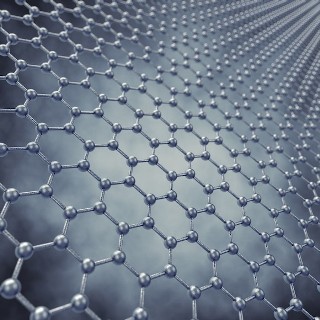Apr 1 2015
An unusual and very exciting form of carbon - that can be created by drawing on paper- looks to hold the key to real-time, high throughput DNA sequencing, a technique that would revolutionise medical research and testing.
 Graphene
Graphene
Led by Dr Jiri Cervenka and PhD candidate Nikolai Dontschuk from the University of Melbourne, the study also included scientists from the Australian Synchrotron and La Trobe University and is published in Nature Communications.
The Australian researchers have shown that graphene- a one-atom thick sheet of hexagonally arranged carbon, shaped like chicken wire - can detect the four nucleobases that make up DNA (cytosine, guanine, adenine and thymine).
A unique combination of the four nucleobases makes up the individual DNA sequence of a gene. Currently, DNA sequencing is a fundamental tool for medical diagnostics, forensic testing and medical and biological research.
The use of graphene to electrically sequence DNA promises to improve the speed, throughput, reliability and accuracy whilst reducing the price compared to current techniques said Nikolai Dontschuk from the University of Melbourne.
“We found that each nucleobase influenced the electronic structure of graphene in a measurably different way,” said Mr Dontschuk.
“When used in conjunction with a nanopore (a tiny hole), a single DNA molecule would pass through the graphene-based electrical sensor - like a single string of beads passing through one section of tiny chicken wire- enabling real-time, high-throughput sequencing of a single DNA molecule.”
The research team conducted the first experiments to combine in situ electrical measurements of graphene-based field effect transistors (GFET) with photoemission spectroscopy at the soft x-ray spectroscopy beamline at the Synchrotron.
After comparing the experimental and synchrotron results, the team predicted that single-molecule sensing of guanine, cytosine and thymine by bulk graphene devices could be achieved.
Notes on Graphene:
Graphene is the world’s first two-dimensional material, with each sheet composed of single layers of carbon. When these are stacked together they make graphite, which is found in drawing pencils. When drawing with a pencil, pieces of graphite peel off, sometimes leaving behind a layer that is one single atom thick, which is graphene.
Although graphene had been studied as a theoretical structure for some decades, it wasn’t officially discovered until 2004, when Andre Geim and Konstantin Novoselov reported they had prepared stable graphene in sufficient quantities to perform analytical measurements.
Their novel preparation method involved using adhesive tape to separate sections of graphite into thinner and thinner layers, which they then transferred to silicon wafers. For their efforts, Geim and Novoselov were awarded the Nobel Prize in Physics 2010.